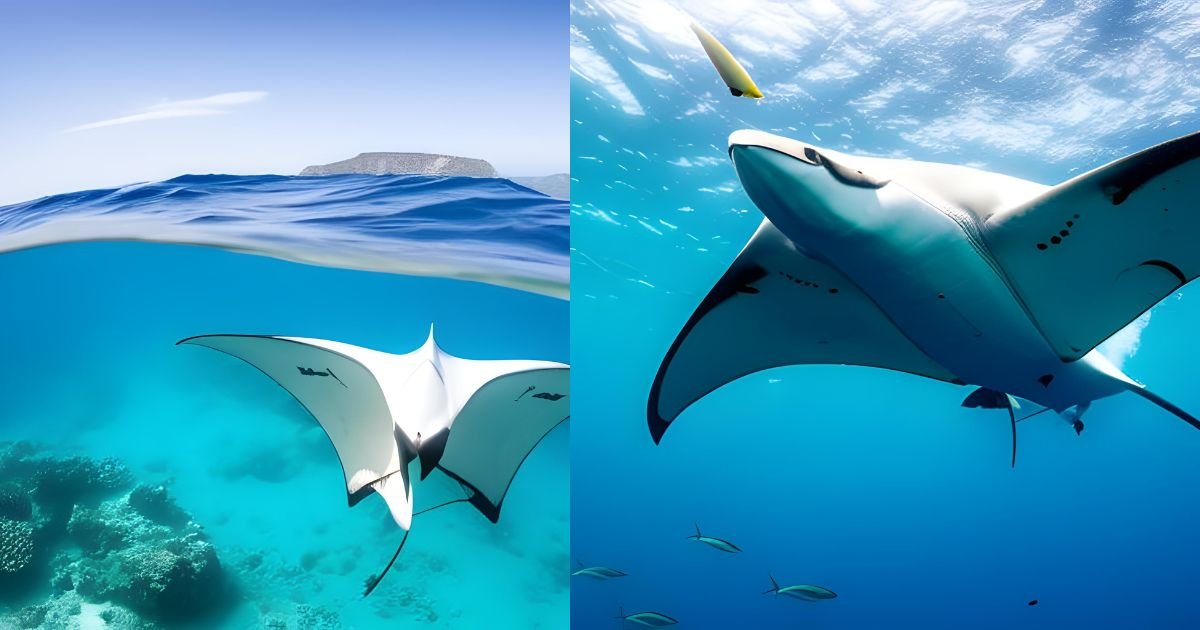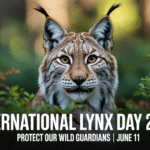September 17 is World Manta Day to raise awareness about manta rays and their issues. The topic for 2023 is tourism, which is essential for manta ray conservation since it provides funding for studies and aids in attempts to preserve their habitats.
Manta rays are famous among snorkelers and divers because of their distinctive features, including cartilage skeletons and spot patterns. They pose no threat to people. However, their hazards include overfishing, becoming tangled in fishing nets, and habitat damage from coral bleaching and climate change.
Governments and marine protected zones enact legislation, and groups like the Manta Trust coordinate international research and conservation programs to save manta rays.
Read More: Lion Headed Goldfish
World Manta Day 2023 Activities

World Manta Day is celebrated on September 17 every year to raise awareness about the importance of manta rays and their conservation. Various events and activities around the World mark the day.
As per my search results, the following are some of the activities that are planned for World Manta Day 2023:
- Outrigger Kona Resort & Spa in Hawaii is collaborating with the Manta Pacific Research Foundation to host a festival for World Manta Day. The event will occur on Saturday, September 16, from 12 noon to 7 p.m. The festival will include informative talks and discussions by local, national, and international experts on manta rays, marine environment, and conservation.
- Holiday Inn Resort Kandooma Maldives is hosting the inaugural Kandooma Manta Week from September 17 to September 23. The week-long celebration includes memorable scuba dives and snorkeling excursions to observe manta rays in their natural habitat, learn about their behaviors and threats to their survival, and share the story of the freeing of ‘Kandooma.’
- My search results for World Manta Day 2023 mention no other specific activities.
What is the difference between manta rays and stingrays?
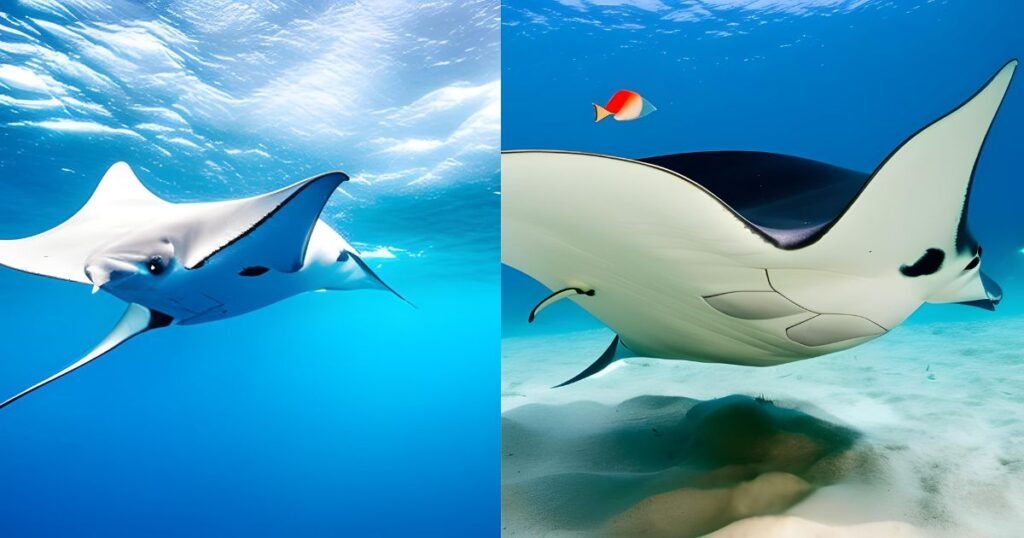
Although both manta rays and stingrays belong to the same family, they are different from one another. Having a wingspan of up to 23 feet and an average length of 15 feet, manta rays are more giant than stingrays, which have an average height of just 6 feet. Manta rays graze on filters, while stingrays consume mollusks and tiny animals.
What are the threats to manta rays?
Manta rays, endangered species under the Endangered Species Act (ESA), face threats from pollution, fishing net entanglement, and Chinese medicine harvesting. The National Marine Fisheries Service (NMFS) is petitioning for protection under the ESA. At the same time, the US supports the listing of all manta ray species under CITES Appendix II. However, habitat loss and overfishing persist.
How can I help protect manta rays?

Manta rays are threatened by pollution, entanglement in fishing nets, and direct harvesting of their gill rakers for use in Chinese medicine. The slow reproductive rate of manta rays exacerbates these threats. Also, habitat loss due to climate change is a significant concern for manta rays as they rely on coral reefs for feeding and breeding.
If you’re interested in helping protect manta rays, here are some ways you can get involved:
- Support conservation organizations: Consider donating to organizations that protect manta rays and their habitats. For example, the Manta Trust is a UK-based charity that works to conserve manta and devil rays through research, education, and collaboration with local communities.
- Reduce your plastic consumption: Plastic pollution, including manta rays, significantly threatens marine life. You can help reduce plastic pollution by using reusable bags, bottles, and containers, avoiding single-use plastics such as straws and cutlery, and properly disposing of plastic waste.
- Participate in responsible tourism: If you’re planning a trip to an area where manta rays are found, consider choosing a reliable tour operator that follows guidelines for sustainable tourism. For example, the Manta Ray Advocates Hawaii website lists recommended tour operators that follow best practices for manta ray encounters.
- Spread awareness: Share information about the threats facing manta rays with your friends and family. Social media may also spread the word about how important it is to save manta rays.
Where are some places to see manta rays?
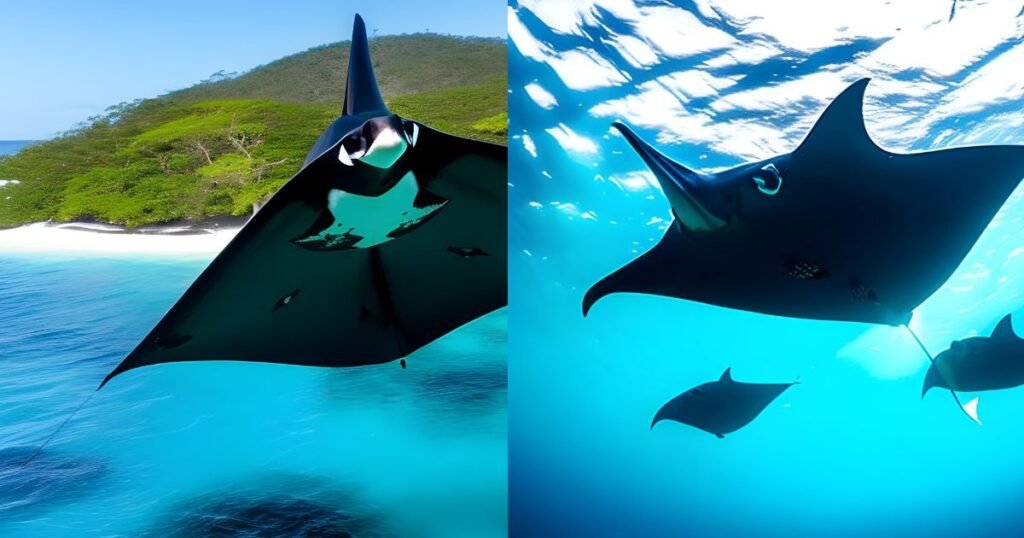
Manta rays are fascinating creatures, and there are many places around the World where you can observe them in their natural habitat. Here are some of the top destinations for manta ray sightings:
- Socorro Island, Mexico: This volcanic island is home to more than 500 individual oceanic manta rays from November to June. Many manta rays near Socorro display the rare, all-black morph and enjoy a disc width of more than 16 feet (5 meters)!
- Costa Rica: Cocos Island is a UNESCO World Heritage Site found 340 miles (550 kilometers) west of Costa Rica’s mainland. The uninhabited island holds congregations of hammerhead sharks, whale sharks, and, of course, the majestic manta rays.
- Kona, Hawaii: Manta rays are frequently spotted in the waters off Kona, Hawaii. Several tour operators offer night snorkeling and diving excursions to observe these gentle giants.
- Maldives: The Maldives is home to some of the best manta ray encounters in the World. The North Male atolls are mainly known for their manta cleaning stations and the famous Fish Factory, Baa Atoll.
- Raja Ampat, Indonesia: Raja Ampat’s abundant marine variety makes it a well-liked diving and snorkeling destination. There are several cleaning stations and sites where you can regularly dive with manta rays in Raja Ampat, including Mountain, Manta Ridge, and Manta Sandy.
- Yap, Micronesia: Yap is a small island in Micronesia that is known for its manta ray population. The best time to visit is between December and April, when the water is most transparent.
Organizations working to protect manta rays around the World

Manta rays are majestic creatures threatened by human activities such as overfishing, pollution, and climate change. Fortunately, several organizations worldwide are working to protect these gentle giants.
One such organization is Manta Trust. They are a UK-based charity coordinating global research and conservation efforts around manta rays, their relatives, and their habitats. Their work includes scientific research, education, and advocacy to promote sustainable fishing practices and protect manta rays from harm.
Another organization that works to protect manta rays is the National Oceanic and Atmospheric Administration (NOAA). NOAA is a US-based scientific agency that conducts research and provides information on the oceans, atmosphere, and climate. They work with partners around the World to study manta rays and their habitats and to develop strategies for their conservation.
Suppose you’re interested in supporting ocean conservation efforts more broadly. In that case, consider donating to one of the organizations listed in this article by Manta-Ray Advocates. They highlight seven ocean conservation charities that they love and support.
The theme of this year’s World Manta Day is TOURISM.
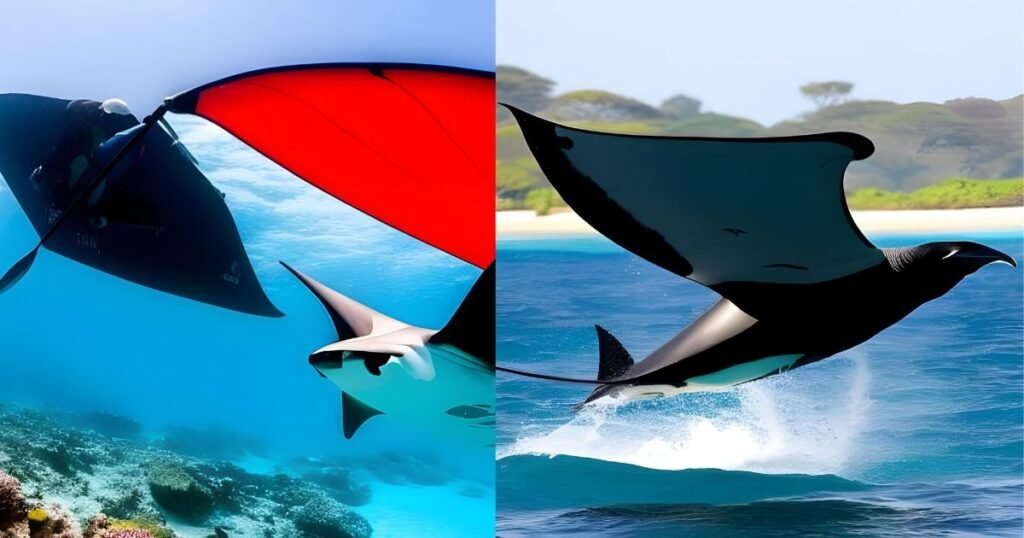
This year’s World Manta Day is being celebrated on September 17, 2023, and the theme for this year is Tourism. The day’s purpose is to honor manta rays and bring attention to the dangers that these enigmatic, gorgeous, and massive ocean creatures confront.
Tourism plays a pivotal role in manta ray conservation, as it helps to raise awareness, generates funding for research, and contributes to efforts to protect manta ray habitats and prevent their exploitation. However, manta ray tourism must be appropriately managed to promote responsible visitor practices and reduce human impacts on their fragile habitats, which, if managed sustainably, helps ensure these magnificent animals’ long-term survival.
Manta Facts

Across the planet, tropical, subtropical, and temperate ocean waters are home to manta rays, the most significant species of rays. Their bodies are big and diamond-shaped, with two horn-shaped fins and triangular pectoral fins. Researchers have identified two species of manta rays, formerly believed to be one: enormous oceanic and reef manta rays.
As filter feeders, manta rays use ingenious strategies like somersaults and chain feeding to remain in areas with a high concentration of krill. They have one of the highest brain-to-body ratios of any fish and frequent cleaning stations. At the age of eight to ten, female manta rays attain sexual maturity and regularly give birth.
Manta Ray Threats
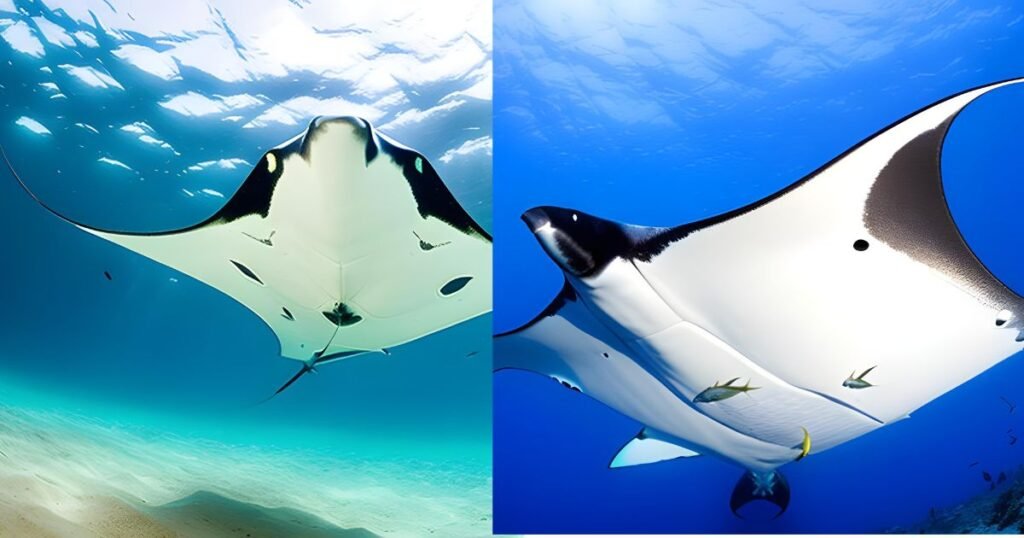
Manta rays are gentle giants that face several threats. The most significant threat to manta rays is overfishing. Fishermen often take Manta rays as bycatch, and their gill rakers are highly valued in traditional Chinese medicine, which has led to targeted overfishing. Other threats include habitat loss due to climate change, pollution, and sediment runoff, which can adversely affect their reef habitat.
Read More: Pollock Fish
How can I support manta ray conservation efforts?
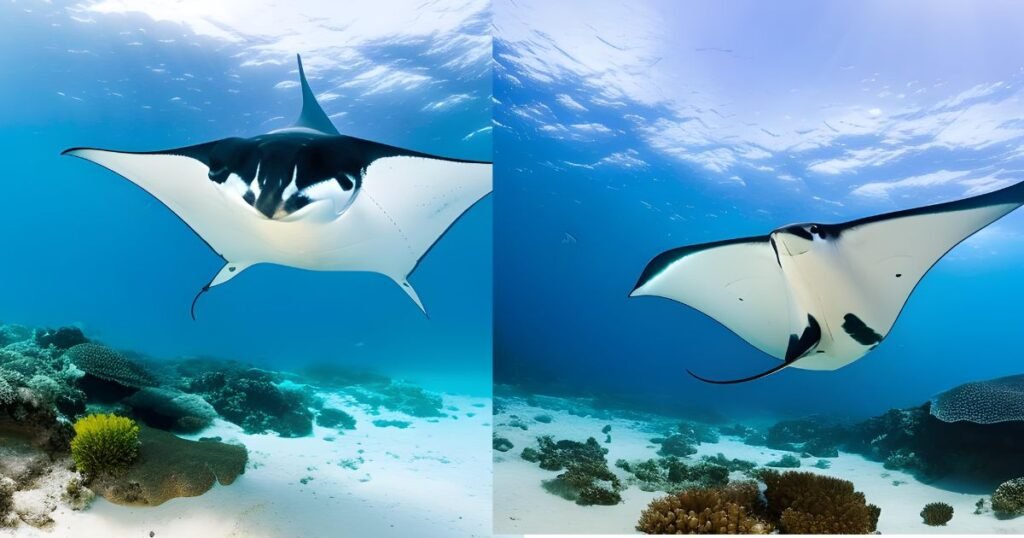
- Donate to organizations supporting manta ray conservation: Several organizations, such as the Manta Trust, work towards conservation. You can donate to these organizations to support their research and conservation efforts.
- Participate in citizen science projects: Citizen science projects allow individuals to contribute to scientific research by collecting data and submitting observations. For example, Manta Matcher is a citizen science project enabling individuals to submit photographs of manta rays, which helps researchers identify individual beams and track their movements.
- Promote responsible tourism practices: Tourism plays a crucial role in manta ray conservation, but tourism must be managed sustainably. You can promote responsible tourism practices by choosing tour operators that follow responsible guidelines, such as those outlined by the Manta Ray & Whale Shark Tourism Guidelines.
- Educate others about manta rays: Educating others about manta rays and the threats they face is an essential step towards conservation. You can share information about manta rays on social media or in your community or even organize educational events or presentations.
- Reduce your carbon footprint: Climate change significantly threatens manta rays and their habitats. You may lessen your carbon footprint by implementing simple lifestyle adjustments, such as reducing electricity use, using public transportation or carpooling, and reducing waste.
Organizations working to protect manta rays around the World.

- Manta Trust: The Manta Trust coordinates global research and conservation efforts around manta rays, their relatives, and their habitats. They have been crucial in establishing fishing bans in several countries, including Ecuador, Peru, Mexico, the Philippines, and New Zealand. You can find more information about their work on their website.
- National Oceanic and Atmospheric Administration (NOAA): NOAA has conducted several studies on manta rays to understand their behavior and habitat requirements. They have worked with institutions, including the University of Rhode Island, the Florida Fish and Wildlife Conservation Commission, Normandeau Associates/APEM, Marine Megafauna Foundation, Georgia Aquarium, Manta Trust, and Mote Marine Laboratory. You can learn more about their research on their website.
- Manta Ray Advocates: Manta Ray Advocates is an organization that aims to introduce people from all over the World to the magic of manta rays and raise awareness about their conservation3. They actively support the work of the Manta Trust. You can find more information about their initiatives on their website.
- Marine Megafauna Foundation: The Marine Megafauna Foundation conducts research and conservation projects on various marine species, including manta rays. They have collaborated with NOAA and other organizations to study the movement patterns of giant manta rays. You can find more information about their work on their website.
- Project AWARE: Project AWARE is a global movement of scuba divers dedicated to protecting the ocean and its inhabitants. They actively support manta ray conservation efforts through education, advocacy, and community engagement. You can learn more about their initiatives on their website.
- Maldives Manta Ray Project: The Maldives Manta Ray Project focuses on studying and conserving manta rays in the Maldives and other tropical archipelagos such as Seychelles and Palau. Their work has contributed to the protection of manta habitats in these regions. You can find more information about their research on their website.
- Manta Pacific Research Foundation: The Manta Pacific Research Foundation conducts scientific research on manta rays in the Pacific Ocean. Their studies aim to understand these magnificent creatures’ ecology, behavior, and population dynamics. You can learn more about their research on their website.
- MarAlliance: MarAlliance is a nonprofit organization that conserves threatened marine species, including manta rays. They research, implement conservation strategies, and promote sustainable fishing practices to protect marine biodiversity. You can find more information about their initiatives on their website.
- Save Our Seas Foundation: The Save Our Seas Foundation supports various marine conservation projects worldwide, including those focused on manta ray conservation. They fund research, education, and outreach programs to protect marine ecosystems. You can learn more about their initiatives on their website.
- Shark Advocates International: Shark Advocates International is an organization dedicated to promoting shark and ray conservation worldwide. While they primarily focus on shark conservation, they also support efforts to protect manta rays due to the ecological importance of these species. You can find more information about their initiatives on their website.
Read More: World Manta Day
Conclusion
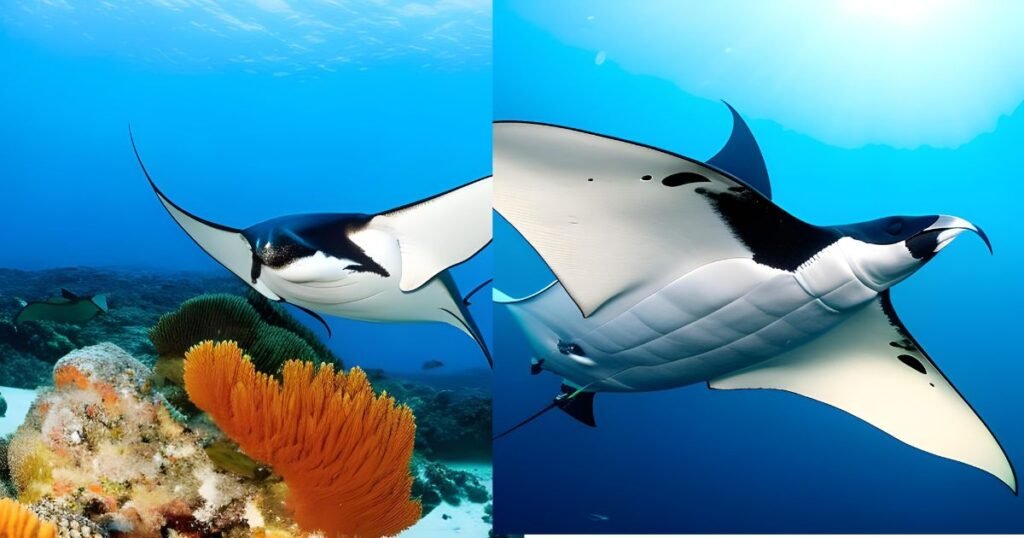
World Manta Day is celebrated annually on September 17 to raise awareness about the conservation status of manta and devil rays. This year’s theme is Tourism. The day’s purpose is to honor manta rays and bring attention to the dangers that these enigmatic, gorgeous, and massive ocean creatures confront. Tourism plays a pivotal role in manta ray conservation, as it helps to raise awareness, generates funding for research, and contributes to efforts to protect manta ray habitats and prevent their exploitation. However, manta ray tourism must be appropriately managed to promote responsible visitor practices and reduce human impacts on their fragile habitats, which, if managed sustainably, helps ensure these magnificent animals’ long-term survival.
FAQs
What is World Manta Day?
World Manta Day is celebrated annually on September 17. It is a special occasion dedicated to raising awareness about the conservation status of manta and devil rays.
How old is Manta Ray?
Not much is known about the growth and development of manta rays, but they have been reported to live at least 40 years. The oldest known manta ray in the World, Taurus, was spotted again on the Great Barrier Reef in 2022, possibly over 50 years of age.
What is manta ray season?
Manta rays are found in warm temperate, subtropical and tropical waters all year round. However, their abundance may vary depending on the location and season. For instance, in Hawaii, manta rays are most abundant in the summer months from May to November. They may be seen in the Maldives from May to November on the eastern side of the atolls and from December to April on the western side.
Is Manta endangered?
Yes, manta rays are endangered. Due to overfishing, bycatch, international commerce, and other factors that have resulted in a sharp drop in their population, the International Union for Conservation of Nature (IUCN) has designated gigantic manta rays as It is listed as “Endangered” on the Red List of Threatened Species.
What is a Manta known for?
Manta rays are known for their large size and graceful swimming style. They have triangular pectoral fins, horn-shaped cephalic fins, and giant forward-facing mouths that they use to filter feed on zooplankton from the water column. They also have the most significant brain-to-size ratio of any cold-blooded fish. They can recognize themselves in the mirror, which indicates high cognitive function.
Why is it called Manta?
The name “manta” comes from Portuguese and Spanish for mantle (cloak or blanket), a blanket-shaped trap traditionally used to catch rays.
What is Manta’s real name?
Manta Ray is its real name. It belongs to the genus Mobula (formerly its genus Manta) and has two species: Mobula alfredi and Mobula birostris.
Are manta rays female or male?
Both female and male manta rays exist. However, it is difficult to distinguish between them as they do not have external sexual organs.
Is manta ray rare?
Given that overfishing and other human activities endanger their survival, giant manta rays are becoming rarer in the wild.
